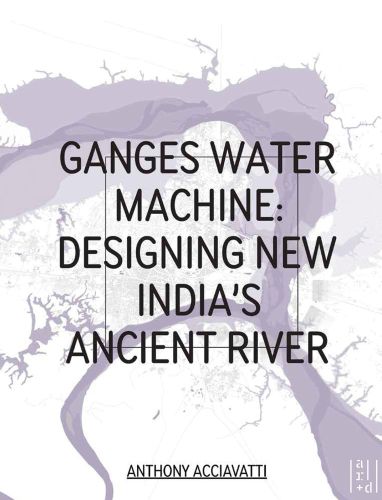
Ganges Water Machine
Designing New India's Ancient River
Beyond the dense urbanism of Mumbai (Bombay) and the technology centres of Bangalore and Hyderabad lies the Ganges River basin: a fertile alluvial plain of 1.1 million square kilometres in area, which is today home to over one-quarter of India’s billion-plus population. While most of the basin sits within India, it extends into present day Bangladesh, Nepal, and Tibet. Not only is the area one of the most densely populated river basins in the world, but every year it also undergoes radical physical changes. With the arrival of the southwest monsoon between late-June and late-August, over one metre of rainfall drenches northern India. And, what is more, despite these drastic seasonal changes and population density, the basin remains agriculturally productive. This book focuses on the overlaps and juxtapositions of these three conditions: Population Density – Monsoon – Agriculture. It is an atlas of built and unbuilt projects designed to transform the Ganges River basin. Since the middle of the nineteenth century, this watercourse has functioned as a laboratory to test and build a new civilisation around the culture of water management. Jointly authored by human actors and their shifting natural heritage, the Ganges River basin is today a machine in which the entire basin functions as a highly engineered hydrological super-surface. This surface has been constructed from innumerable interventions operating at vastly different scales – from massive state-sponsored canals to individually-drilled wells. Because of the mixture of actors, the scale of inhabitation, and the widely varying techniques of interventions, this landscape of infrastructure requires a different kind of map. Reaching through the very heart of some of India’s most densely populated cities, small towns, industrial zones, sacred sites, and mountainous forests, Ganges Water Machine by Anthony Acciavatti, composed of eight years of field and archival research, explores and theorises the people and infrastructures that shaped this territory. Ganges Water Machine is an atlas of the enterprise to make the Ganges River basin into a highly engineered landscape: it reveals the narratives and explanations that allowed engineers and planners to realise fantasies previously only imaginable on paper or in myth.
- Publisher
- ORO Editions
- ISBN
- 9780982622612
- Published
- 1st Apr 2015
- Binding
- Hardback
- Territory
- World excluding USA, Canada, Australasia & Asia (except Japan; China non-exclusive)
- Size
- 298 mm x 229 mm
- Pages
- 402 Pages
- Illustrations
- 1627 color, 38 b&w
Distributed by ACC Art Books
Our Catalogues
Please log-in or create an account to see your recent items.